to authentic
French experiences
#02


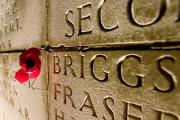
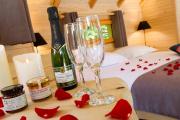
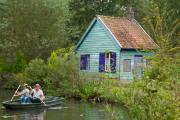

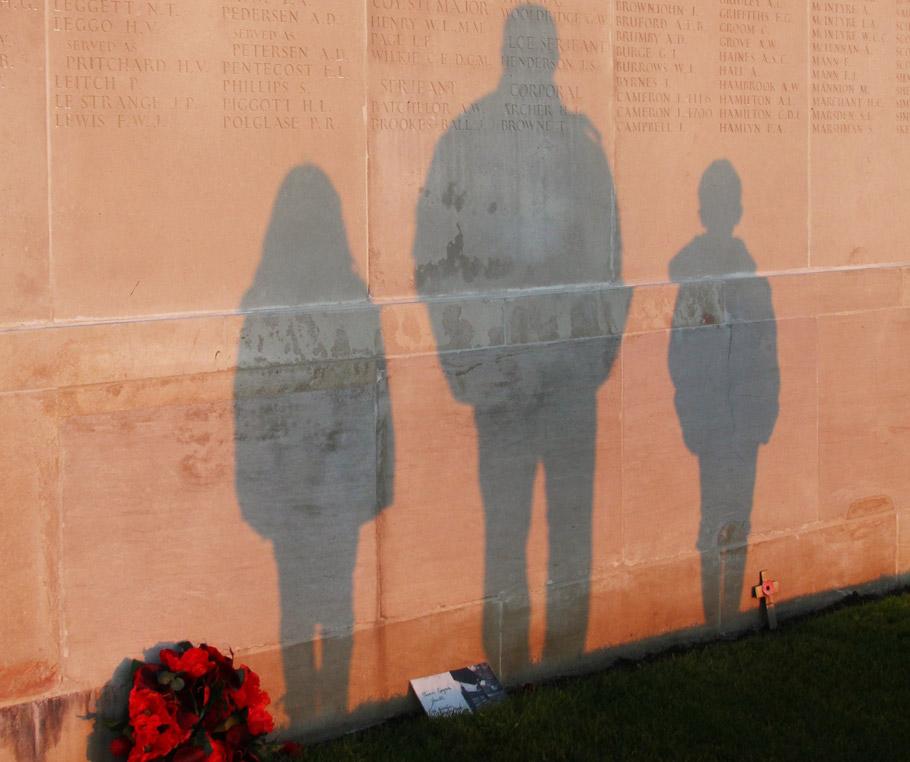
 local expert
Cathy
local expert
Cathy
Compiègne, lies a network of cultural exchanges that nourishes this region.
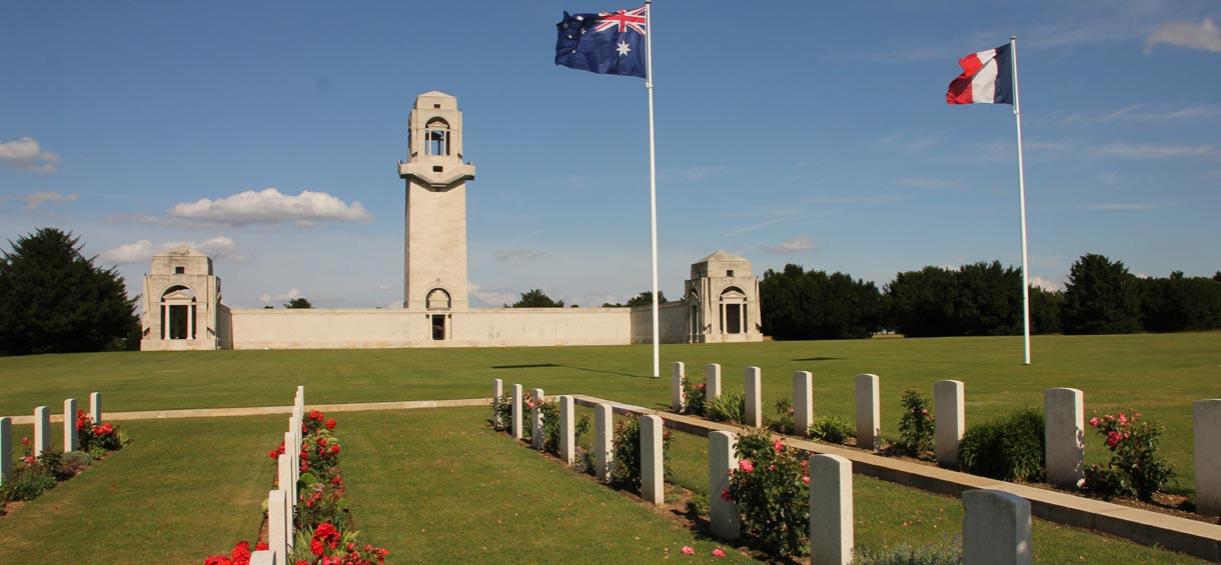
Battle of Pozières
Australian Sacrifice
2016 sees the centenary of a bitter six-week combat central to the Battle of the Somme, with an Allied win but a huge number of losses and casualties, many of them for the ANZAC forces.
Site of an estimated 23,000 casualties in three Australian Divisions (the 1st, 2nd and 4th), including 6,800 losses, Pozières and surrounding countryside has been described by historian Charles Bean as ‘more densely sown with Australian sacrifice than any other place on earth’. Some have argued that the battle has left as great a mark on Australian history as Gallipoli.
Pozières was the first offensive action on the Western Front for ANZAC troops, who were charged with capturing its ridge - a strategic defence position for the Germans. Including one 12-and-a-half-hour grenade battle, and brutal and exhausting hand-to-hand combat, the fighting lasted from 23rd July to 5th August, when the ridge finally fell to the Allies. Now in possession of the plateau to the north and east of Pozières, they were in a position to threaten Thiepval, a German stronghold.
Even so, wandering the town today, you can still find traces left by the Great War. Stories hidden within Amiens walls Book a tour guide and stroll around the cobbled streets of the city to learn about the fascinating stories of Amiens during the war. Linger in the stunning cathedral which was hit nine times, but escaped catastrophic damage thanks to sandbagging. Marvel at the colourful windows – unless you were told, you may not realise that many are not the originals. They were shipped away for safekeeping during the war and, ironically, lost in a fire while in storage. Your guide can also point out the spot where the cathedral had a lucky escape when a shell smashed through the ceiling in 1918 and landed by the choir – without exploding.
 local expert
Samuel
local expert
Samuel
Because they were taken down by troops rather than skilled restorers several holes had to be patched –around 100 holes had to be repaired in one.
Walking along the Chemin des Dames, in the shade of tall pines, it’s hard to imagine that this peaceful landscape dominated by a long green ridge is one of the deadliest sites of World War One. The trees, it turns out, were planted here after the area, riddled with munitions, was declared a no-go zone for farming. It’s even more difficult to comprehend that a village, Craonne, once stood here, home to 700 people (it was reconstructed nearby). The Plateau de Californie on the slopes of which it stood had great strategic importance throughout the war, with the Nivelle Offensive of 1917 involving particularly heavy losses and the destruction of Craonne.
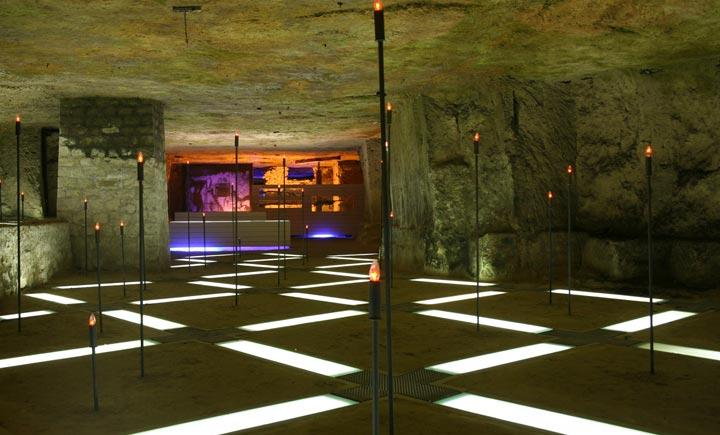 An unmissable stop on the Remembrance Trail, visit the underground Caverne du Dragon
© CRT Picardie/ H Sterkendries
An unmissable stop on the Remembrance Trail, visit the underground Caverne du Dragon
© CRT Picardie/ H Sterkendries
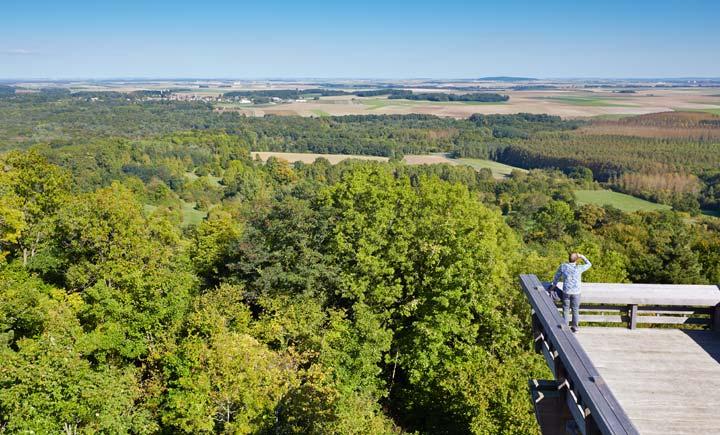 This strategic vantage point on the Chemin des Dames allows some poignant reflection
© CRT Picardie / G Crochez
This strategic vantage point on the Chemin des Dames allows some poignant reflection
© CRT Picardie / G Crochez

Thousands of soldiers of all social classes lived in this spot for four years, in cold and in fear and yet demonstrating a touching sense of fraternity. This was even known to extend to enemy soldiers, who sometimes exchanged food and cigarettes, chatted together from their respective trenches, and upheld tacit non-aggression pacts.
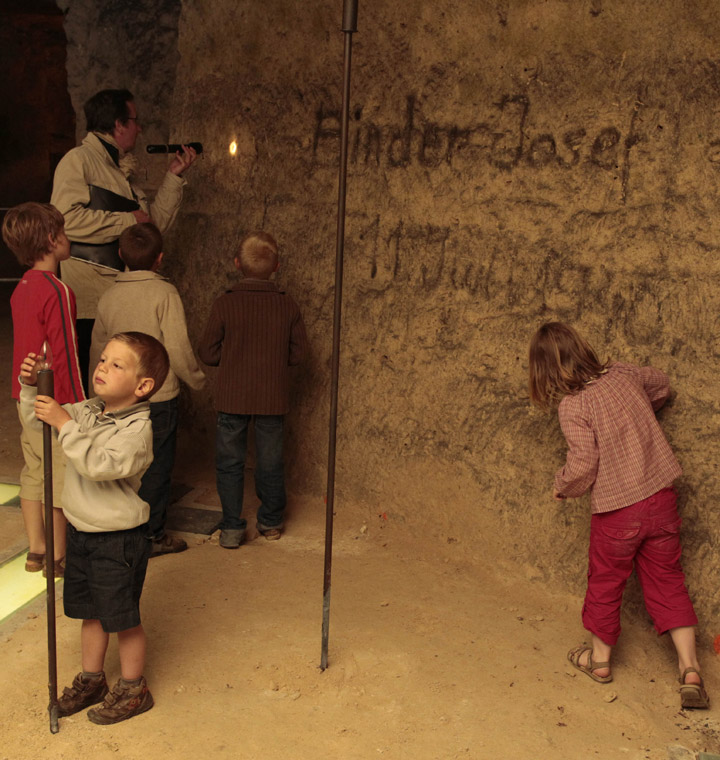 An interactive WW1 introduction for children at the Caverne du Dragon
© CRT Picardie/AS Flament
An interactive WW1 introduction for children at the Caverne du Dragon
© CRT Picardie/AS Flament
If you are looking for a way to introduce the kids to a bit of WW1 history, visit the Dragons Lair (between Laon and Reims). Its underground structures which housed soldiers from both sides (sometimes at the same time!) are fascinating to explore.
Black statues rising from the landscape are the first sign that Oulches-la-Vallée-Foulon is something other than farmland as far as the eye can see. Monuments to Senegalese soldiers who fought for France, they announce your arrival at the striking modern building that houses the Caverne du Dragon (the Dragons Lair).
Step inside and you’ll find displays about World War I in the region. But the real reason to come lies below the building, in the form of a three-hectare limestone quarry. Once mined to build the creamy-white châteaux and churches that dot this region, it served as a German base from 1915 to 1917, but sometimes housed soldiers from both sides of the conflict who were known to share cigarettes and create informal peace pacts.
The quarry provides a fascinating insight into the history of this département that lost more settlements than any other in World War I - a staggering 139 villages were destroyed. For French-speaking children, there are short Dragon Tours; otherwise, general tours in English at noon daily are suitable for all the family.
Walking around this atmospheric underground labyrinth brings into sharp focus the daily life of the 250 soldiers who stayed here at any one time – remnants of their activities include weapons but also everyday items such as plates still bearing traces of food. Blown-up photos of scenes inside the Cavern – found in German archives – also help bring the Caverne to vivid life.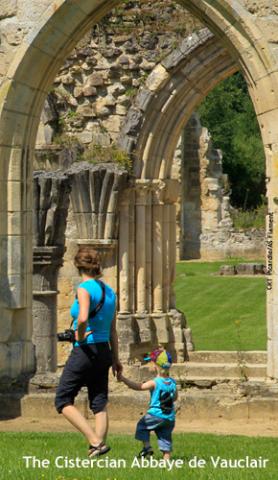
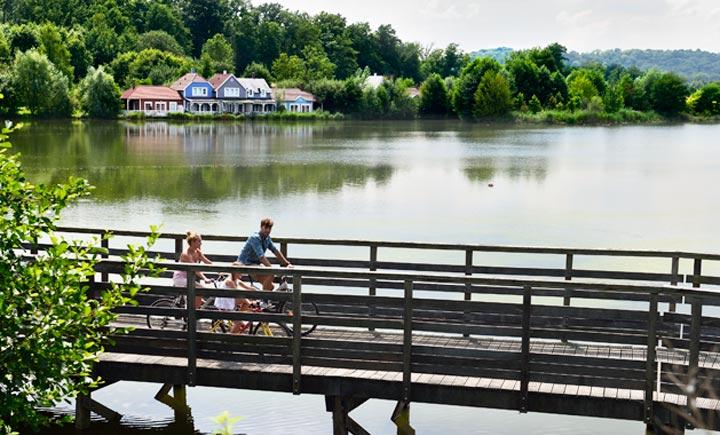 Get out and about on the Voie Verte cycle route
© CRT Picardie/ B Gouhoury
Get out and about on the Voie Verte cycle route
© CRT Picardie/ B Gouhoury
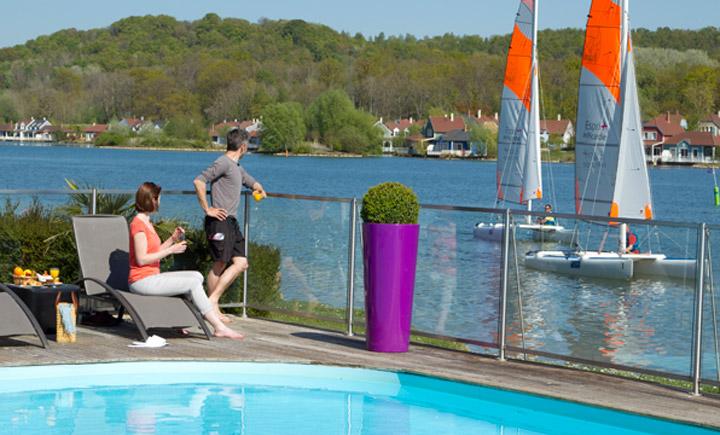 Relax by the pool at the Hôtel du Golf de l'Ailette
© CRT Picardie/ AS Flament
Relax by the pool at the Hôtel du Golf de l'Ailette
© CRT Picardie/ AS Flament
The Abbaye marks one end of the Voie Verte de l’Ailette, a walking and cycling ‘Green Way’. Families staying at the Hôtel du Golf de l’Ailette on the lakeside at Chamouille can borrow bikes for all ages, or Center Parcs resort across the water has guest bike rental. Both properties also have swimming facilities, and there are watersports galore on the lake.
It’s about a seven-kilometre, mainly flat bike-ride from the hotel to the Abbaye, over boardwalks, through reedbeds and alongside streams and the lake itself. Bird-hides along the shore are good spots to take a breather, with viewing windows at heights suited to all ages. Or in the other direction, towards hilltop medieval Laon, the Base de Loisirs Axoplage is a lake beach with pétanque, nature lookouts, and picnic and barbecue areas.
Practical Information
The chic village of Chantilly (not just famous for its unctuous cream!), just north of Paris, is drenched in heritage, has great food and wine and abundant natural beauty – it’s a perfect place to experience the French ‘art de vivre’.
The Château de Chantilly/Musée de Condé is the big-hitter here, with its spectacular display of art amassed by the Duc d’Aumale, son of France’s last king Louis-Philippe – a pre-Impressionist collection second in France only to that of the Louvre.
The Etangs de Commelles near Chantilly have idyllic lake/forest paths.
 local expert
Karin
local expert
Karin
There are also fountains, a Le Nôtre parterre with statuary, English-style gardens and beehives. Interesting structures include the poetic Maison de Sylvie, once a refuge for the Duchess of Montmorency, a temple of Venus, and the Ile d’Amour or ‘island of love’ with a smaller Venus.
In the château’s magnificent former stables with their views over Chantilly’s racecourse, the Musée du Cheval is compelling even for those not interested in horses, with displays on horses throughout civilisation plus spectacular equestrian shows.
La Ferme de La Canardière is a chic B&B on a working farm, with three sumptuously decorated rooms with fluffy bathrobes, and an outdoor swimming pool.
Practical Information
France
from up
high
A Romantic Night in a Luxury Nest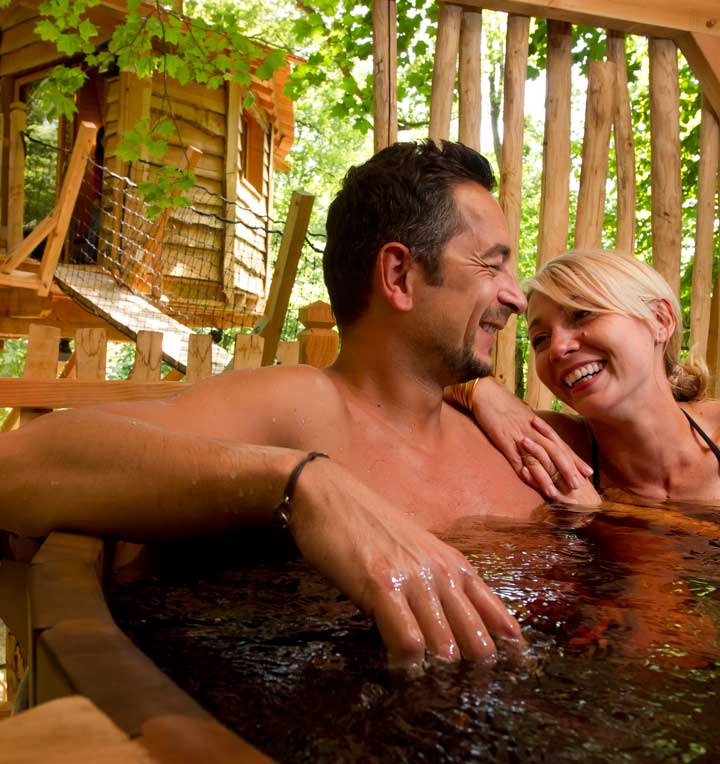 Treetop cabin with its own spa
© CRT Picardie/AS Flament
Treetop cabin with its own spa
© CRT Picardie/AS Flament
Step out of time and truly get away from it all with with a stay in a cocoon-like treehouse hidden away in splendid greenery, with breakfast and a champagne dinner delivered to you in a basket.
It’s hard to believe that the tiny hamlet of Raray tucked amidst rolling farmland is just an hour’s drive from central Paris and 12 minutes from the A1 Autoroute du Nord between Paris and Lille. Here, in the grounds of a handsome 18th-century castle turned hotel, those with romantic leanings will find the accommodation of their dreams high in the treetops.
The Cabanes des Grands Chênes are the ultimate treehouses, with hot showers, coffee machines and even fluffy bathrobes. Yet for all that, there’s a true back to nature feel to them - access is by woodland track (on foot or by chauffeured golf buggy), and at night the only sounds you hear are the hooting of owls. That and the bubbling of your open-air hot tub - five of the 12 huts are Cabanes Spa, some with bedrooms in pod-like ‘bubbles’ hanging from the trees.
The hotel golf course is on hand, or you can just wander around this magical estate where Jean Cocteau filmed the outdoor scenes of La Belle et la Bête in 1945, amidst the evocative statuary. The minuscule (but expanding) shop in the treehouse reception sells local products including honey from the surrounding woods, and in the evening you can order a basket with dinner - also comprising regional produce - to be brought to your treehouse, along with champagne or artisan beer.
It’s a 20-minute drive from Raray to Senlis with its charming cathedral and antique shops such as Scène d'intérieur brimming with typically French objects to take home with you. There’s also delicious dining to be had at Le Scaramouche, with lovely views of the cathedral facade to be enjoyed as you feast on the inventive likes of wild boar pâté with coriander and blackcurrant. Pratical Information
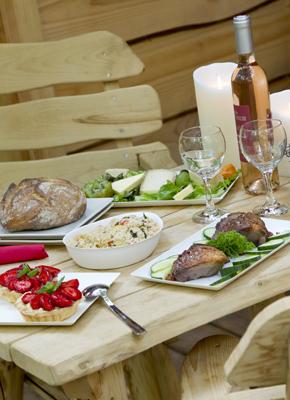
Meander cobbled streets
This pretty harbour town overlooking the stunning Somme Bay will make you feel miles from home, yet at less than an hour from Calais it’s just a quick hop over the channel. Wander around the mediaeval old town, where in summer the streets are full of flowers. Stroll through the quartier de l’Abbaye with a fantastic view of the bay and a countryside feel with working farms. Here, next to Chapelle des Marins, you’ll find la source de la fidelité (fidelity spring), from which newly-married couples used to drink to pledge their fidelity.
Back in the main part of town, the quartier des marins (sailors’ district) has steep, narrow streets and fisherman’s cottages reminiscent of a Cornish village, as well as the Samaris Spa. The spa’s outdoor Jacuzzi and large sauna with an unusual exterior window offer panoramic views over the water, and there are tranquil indoor and outdoor relaxation areas. Best of all, during your two-hour session in the sauna, Jacuzzi and hammam, these facilities are exclusive to you and your loved one. Afterwards you can choose from a range of massages and treatments offered in a dual treatment room using only natural products.
The boutique-style Hotel des Pilotes overlooks the bay and is a charming place to stay, offering quirky rooms with printed carpets and retro features, plus showers big enough for two. There’s also a cosy bar and a restaurant with tempting seafood platters on the menu. Another romantic option is Château du Romerel, an intimate and luxurious chambre d’hôtes, plus smart self-catering apartments in wooded grounds with a swimming pool and bay views.
There’s a large choice of restaurants serving fish fresh from the sea and other local produce.Le Relais Guillaume de Normandy offers fine-dining in an early-20th century manor. The old town’s only restaurant, le Vélocipede, is also a romantic spot. It serves food sourced from within 120 km and has its own art gallery.
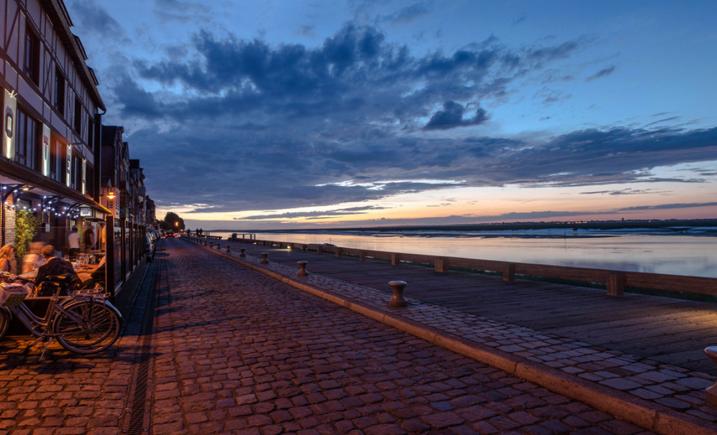 Watch the sun set over the enchanting Somme Bay© CRT Picardie / N.Bryant
Watch the sun set over the enchanting Somme Bay© CRT Picardie / N.Bryant  local expert
Laurence
local expert
Laurence
A romantic waterside mediaeval town with fabulous seafood restaurants for an easy French fix.
As the town is compact, you can park your car and forget about it during your stay – you won’t need it. You can simply stroll or, if you prefer, hire a bike and explore the boardwalk, dykes and surrounding areas that way – there are plenty of cycle paths. Guided nature walks and kayaking trips are also available during which you can see the varied bird life and, if you are lucky, some of France’s largest colony of seals.
Or, if you prefer, you can simply relax and enjoy the views. You might like to cross the lock to the North dyke and watch the sun set over the water from the bench by the lighthouse, away from the bustle of the main street, or enjoy an apero at La Buvette de la Plage overlooking the town beach as the sun goes down. Just the two of you.
Pratical Information
She is a keen bike-rider, sea-swimmer, and owner of gourmet and beauty shop La Sardine.
You can’t come to Saint-Valery-sur-Somme without trying the seafood. At Au Poisson du Coin you can buy fish direct from fisherman Monsieur Delaby to cook at home, or you can enjoy the same produce in the next door restaurant Le Mathurin, which is run by his son Pierre Alain.
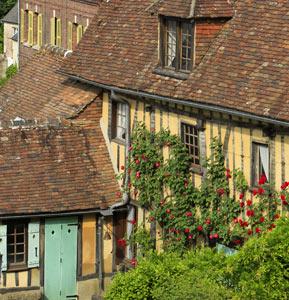 One of the ‘Most Beautiful Villages in France’, Gerberoy’s half-timbered buildings clad in roses, gorgeous gardens and gastronomy make it the perfect couple’s weekend getaway destination.
One of the ‘Most Beautiful Villages in France’, Gerberoy’s half-timbered buildings clad in roses, gorgeous gardens and gastronomy make it the perfect couple’s weekend getaway destination.
Gerberoy is one of those places just made to amble around at your own pace, with its winding streets lined by colourful rose bushes growing up the walls of its medieval houses and in every nook and cranny. Other than the 11th-century church and Italianate Jardins Henri le Sidaner – founded by the intimist painter, and also filled with roses– there are no ‘sights’. All the better to soak up the atmosphere, browse one of the tiny art galleries and relax in a tea-room or country bistro.
At least 1,000 years old, Gerberoy is a remarkable survivor of this region’s turbulent past. An important Norman stronghold due to its elevated position, it survived both the French Revolution and World War I. That said, three large fires shrank it dramatically – despite technically being a town (the smallest in all France), its population numbers only 115, including those with holiday homes.
There’s also a ramparts walk circling the village, with views of Picardy to one side and Normandy to the other. Or those with more time can tackle the 33-kilometre Boucle des Deux Châteaux walking/mountain-biking trail through local countryside and villages.
The Château de Rambures with its rose garden is an hour from Gerberoy.
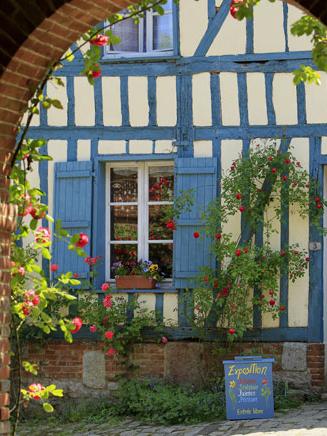 © CRT Picardie / AS Flament
© CRT Picardie / AS Flament
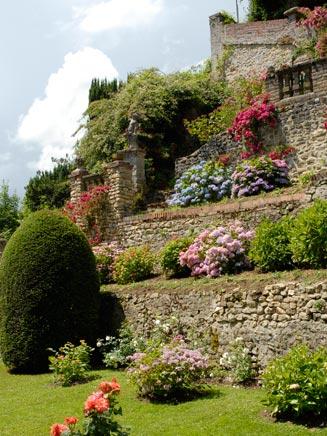 The terraced garden of artist Henri Le Sidaner
© Jean-Pierre-His
The terraced garden of artist Henri Le Sidaner
© Jean-Pierre-His
“Gerberoy is where I feel happiest. Our house is far from being a 'holiday home' – it's a doorway into French life.” Rosemary
Writer Rosemary Brown and her husband David Stanton, former chair of UNICEF-UK, fell in love with Gerberoy on a cold, wet, grey day in January 1999. Then living in Paris, they were on the lookout for a weekend retreat with a garden.Now back in London, Rosemary heads to Gerberoy six to eight times a year and stays as involved as she can. She’s a founding member of the Clos Gerberoy vineyard, helped restored the Sidaner gardens, and is a member of the June music festival Les Moments Musicaux de Gerberoy. She also helps plan and run the rose festival.
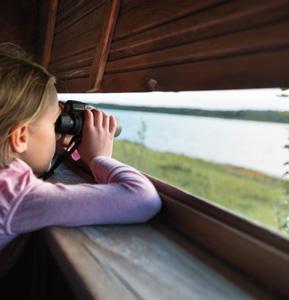 During your stay in France, the best way to get the kids into the great outdoors is a visit to Le Parc du Marquenterre in the Somme Bay, host to around 350 species of birds and animals.
During your stay in France, the best way to get the kids into the great outdoors is a visit to Le Parc du Marquenterre in the Somme Bay, host to around 350 species of birds and animals.
 local expert
Philippe
local expert
Philippe
close and personal with the birds without disturbing them at all.
Beach-loving families are spoilt for choice on the unspoilt coast in Northern France! Whether you prefer huge beaches with sand dunes or cute beach huts and pebbles, there’s a landscape to suit you.
Play on the beach in total safety.
Which new beach will you discover today? Build sandcastles and splash about in the gentle waves of Fort Mahon-Plage or the 15-kilometre long Quend-Plage-les-Pins one day, and stroll along Europe’s longest wooden walkway at the pebbly beach of Cayeux-sur-mer with 400 colourful beach huts the next. Whichever beach you choose, your kids can stay safe in the supervised swimming areas.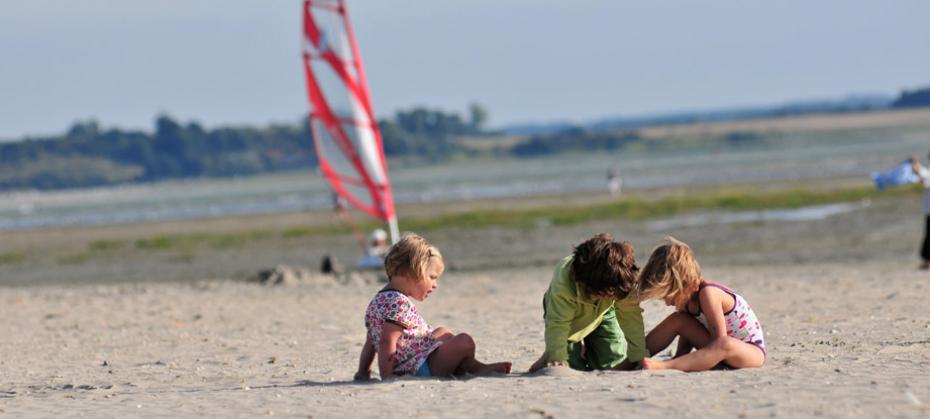 Sandy beach with plenty of room to build sandcastles, play beach games...
© CRT Picardie/N.Bryant
Sandy beach with plenty of room to build sandcastles, play beach games...
© CRT Picardie/N.Bryant
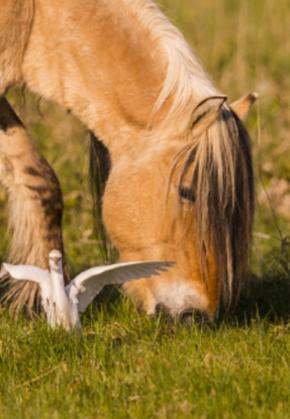 The Somme Bay's native horse, the Henson
© CRT Picardie /S Bouilland
The Somme Bay's native horse, the Henson
© CRT Picardie /S Bouilland
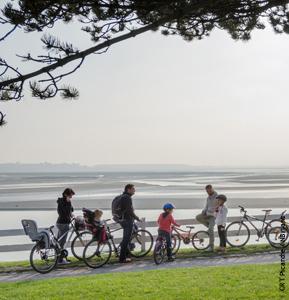 And after spending the day building sandcastles and playing in the gradually-shelving sea, why not introduce the kids to moules frites (mussels and chips) on the terrace of one of the many restaurants close to the shore?
And after spending the day building sandcastles and playing in the gradually-shelving sea, why not introduce the kids to moules frites (mussels and chips) on the terrace of one of the many restaurants close to the shore?
Introduce the kids to France on a fun family beach holiday.
 local expert
Elodie
local expert
Elodie
Familiar to many from the BBC’s Merlin, Château de Pierrefonds is the perfect place to break your journey south – and the surrounding former royal hunting forest a fantastic spot for stretching your legs.
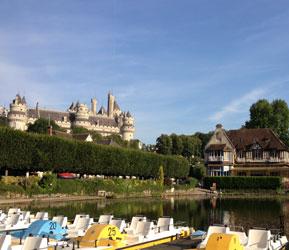
Family adventure
at Park Astérix
Laughs and thrills for all agesTreat the kids and create shared memories at a uniquely French theme park with family and adrenaline rides, then discover a fairytale medieval castle and explore a spellbinding forest by bike.
Parc Astérix is unlike any other theme park in the world – therein lie both its strength and its charm. Based mainly on the famous Astérix stories but also embracing historic cultures – the Romans, ancient Greeks, Vikings and Egyptians – it assures visitors a dose of history along with their belly laughs… Don’t miss the shows, which include a fabulous Gauls versus Romans ‘Match’ in the Arena, featuring a hilarious dance-off.
Despite its Gallic theme, Parc Astérix is accessible to all, with English spoken by staff throughout, together with buggy parks, highchairs and kids’ menus for young families.
The best eatery is the outlandish, fruit-and-vegetable themed Restaurant du Lac serving the Gallic and Roman likes of wild boar brochettes and Julius Caesar salad. This theme park is also easy to reach, with its own exit off the A1 motorway between Paris and Lille. Meeting up again at the on-site Hôtel des Trois Hiboux (which has its own entrance to the Parc), you’ll discover stylish, nature-themed rooms with terraces or balconies overlooking the woods, a play room, a games room and magic shows.
A short drive away, the Château de Pierrefonds, which doubled as Camelot in the BBC’s Merlin, is another great place to take kids for some learning dressed up as a thrilling day out – it comes complete with grotesque gargoyles, sculptures of medieval monsters, old dungeons to explore and even life-size model of catapults in the grounds. There’s plenty to entertain the family in Pierrefonds itself, including swan pedaloes on the lake and a safe waymarked cycling route taking you into the heart of the stunning Compiègne forest with its wonderful wildlife.
Practical Information
In Amiens, between Paris and Lille, exploring Les Hortillonnages - a series of gorgeous islands separated by canals, makes for a very different French experience.
As you leave the city behind and immerse yourself in nature, contemplate the area in Roman times, when the marshland of Les Hortillonnages were transformed into market gardens. Drift along the waterways in a traditional barque a cornet (a flat boat with raised ends) or stroll hand-in-hand among the islands now used them for gardening, fishing, or simply as a place to relax by over 1,000 different owners.
While you explore, you’ll probably see some of the many species of birds which make Les Hortillonnages their home, including mute swans, crested grebes and moorhens. And in the summer, marvel at the banks and gardens which come alive with flowers and reeds, and the beauty of the water lilies and water primrose in the canals and ponds.
Discover the Saturday market in Saint-Leu where the 10 market gardeners still working in the Les Hortillonnages now sell their produce. And if you are visiting in June, don’t miss the marché traditionnel sur l’eau (traditional market on the water), when the gardeners arrive by boat in traditional dress
to sell vegetables from the boats at the side of the quay as they would have done in times gone by. During the rest of the year, look out for vegetables grown in Les Hortillonnages in the town’s supermarkets and markets* labelled “Les t’cho legumes des hortillons” or enjoy a meal at one of the city’ restaurants which serve vegetables from Les Hortillonnages, such as Chez Lafleur or l’Hortellus.
Revel in the tranquillity as you stroll around the tow paths or drift along the waterways. Only boats with very low-powered motors are permitted along the network of canals and the building of houses is forbidden, so everything is calm. Apart from the plots on the edge of the 300 hectares, there isn’t even electricity here – it’s almost like stepping back in time.
 local expert
Samuel
local expert
Samuel
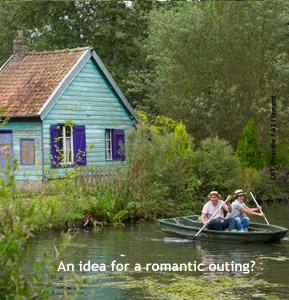
A peaceful, natural retreat close to the heart of the city
Take a boat trip, or if you’d prefer more privacy as a couple and to take things at your own pace, you can rent a boat, kayak or canoe, or follow a 13.5 km walking trail.
For couples looking for a restful break truly away from it all, the rustic cabins set in a quirky garden at D’une île à l’autre are perfect. Each cabin comes with bikes and a rowing boat so you can enjoy the shops and restaurants of the city when the mood takes you – or simply relax in your own tranquil idyll. Alternatively you could choose Comme une Parenthèse – three self-catering cottages set around a garden and courtyard. From either place you can quietly stroll, cycle or row, perhaps stopping for a drink at one of the restaurants and cafés along the towpath overlooking the water now and then – or take a picnic and find your own private spot. Make the most of every minute.
Practical information
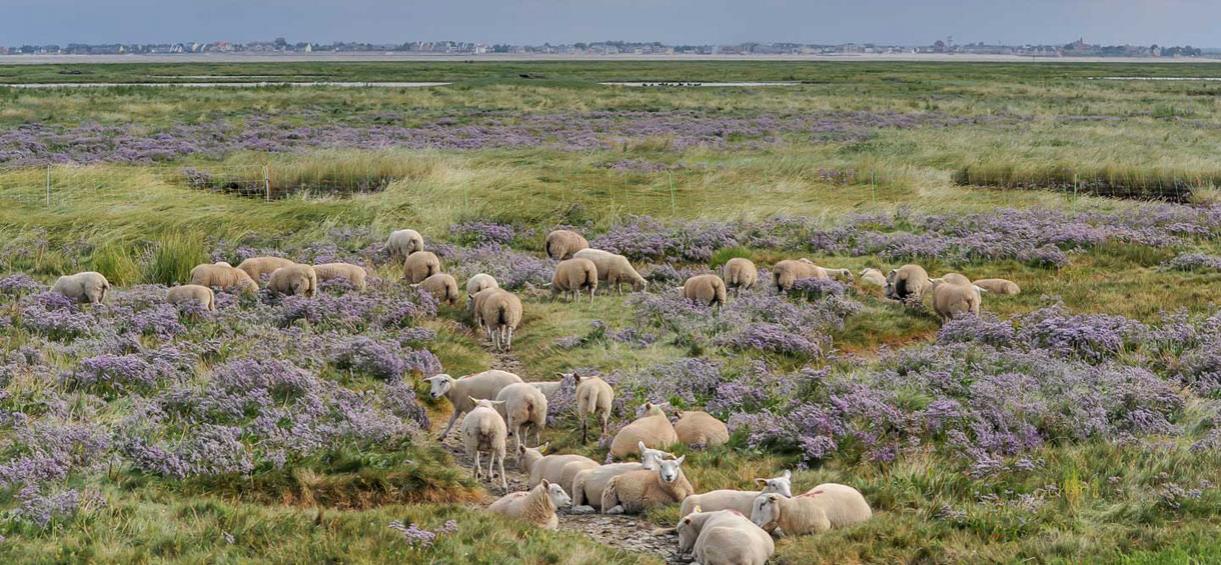
France goes Green.
The Somme bay, one of France’s listed Natural Wonders, is within easy reach of London yet worlds away from modern life and where wildlife spotting and foraging for wild foods is 100% natural.
Getting away from it all doesn’t have to mean boarding a plane. Just over an hour from Calais, the Somme Bay is an otherworldly setting for a change of scene in the great outdoors. You don’t even need a car – you can walk everywhere, refuelling on healthy local produce. Nor do you need to go to a restaurant to sample the region’s gastronomic delights. Take a walk with Olivier Hernandez of Sens Naturel and you may taste wild plants such as oreilles de cochon (sea asters), samphire and sea
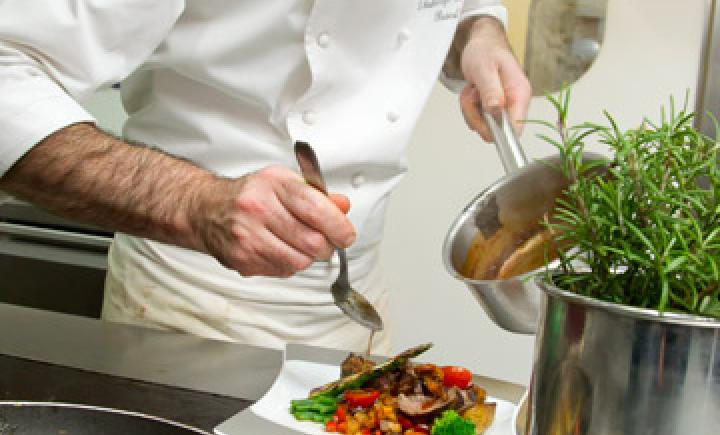 Restaurants in the Somme Bay put a real emphasis on local sourcing
© ADRT Somme/ AS Flament
Restaurants in the Somme Bay put a real emphasis on local sourcing
© ADRT Somme/ AS Flament
purslane on the Bay’s salt marshes. Olivier will also let you in on secrets about the creatures that live under the sand and those that cross it by night (including wild boar), as well as the birds, salt marsh sheep and seal colonies for which the bay is renowned.
Fertile vineyards and winding waterways dotted by picture-postcard villages, half-timbered medieval churches and castles like something from a story-book: Champagne is a place to enjoy at your own pace – just as you would a coupe of the famous fizzy wine. You’ll find it almost impossible to believe you’re just a few minutes off the Autoroute de l’Est and 80 minutes from Paris…
Gain an understanding of wine production by touring the prestigious Champagne Pannier in Château-Thierry, with its cellars in medieval stone quarries, or head for one of the smaller family-run farms dotting the undulating countryside that surrounds Château-Thierry such as The Champagne Meteyer.
Part of the joy of the discovering this region lies in simply happening upon champagne producers along the idyllic tree-lined lanes (though the signposted Route Touristique de Champagne will help you pinpoint them).
 local expert
Christelle
local expert
Christelle

